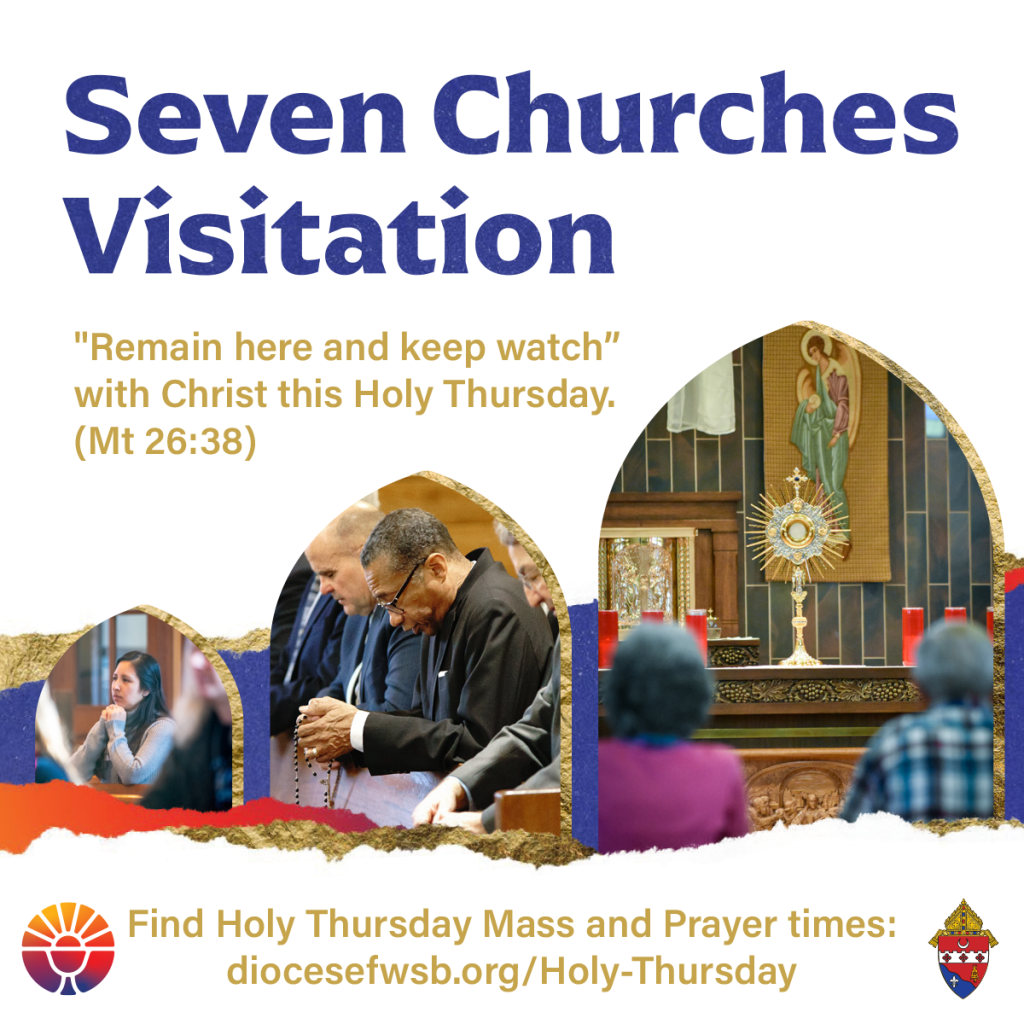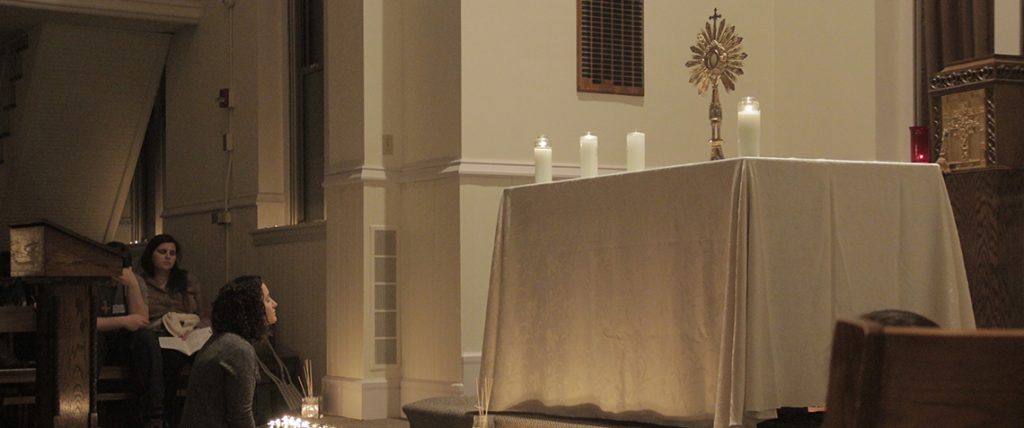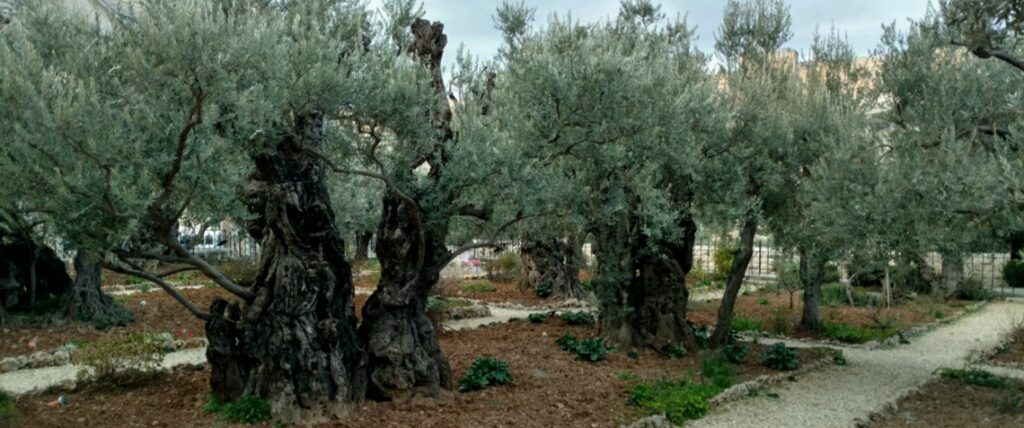March 19, 2024 // Diocese
Seven Churches Visitation Allows Pilgrims to ‘Keep Watch’ with Jesus on Holy Thursday
Holy Thursday is the feast that marks the beginning of the Holy Triduum, which also includes Good Friday, the Easter Vigil, and Easter Sunday. At this Mass of the Lord’s Supper, Catholics remember the Passover meal, when Jesus instituted the Sacrament of the holy Eucharist.
At the end of the Holy Thursday Mass, the Eucharist is placed on a temporary “altar of repose” away from the sanctuary. It is customary for the faithful to process together to this altar and spend time in quiet prayer and adoration. In the Roman Missal, it states: “The faithful are invited to continue adoration before the Blessed Sacrament for a suitable length of time during the night, according to circumstance.”
The Seven Churches Visitation is a tradition that grew out of this time of prayer and adoration. The devotion recalls the time in the Garden of Gethsemane immediately before Jesus’ passion when He asked His disciples to stay and give watch with Him as He awaited His fate. Today, the practice of visiting seven nearby churches and their altars of repose evokes this mindful watching with Christ on the eve of His condemnation, torture, and death on Good Friday. Each of the seven churches visited on Holy Thursday evening represents a “station” of Christ’s passion that falls between the Last Supper in the Upper Room to His crucifixion.
The seven stations consist of:
• Jesus in the Garden of Gethsemane (Luke 22:39-46).
• Jesus bound and taken before Annas (John 18:19-22).
• Jesus taken before the High Priest, Caiaphas (Matthew 26:63-65).
• Jesus taken before Pilate (John 18:35-37).
• Jesus taken before Herod (Luke 23:8-9; 11).
• Jesus taken before Pilate again (Matthew 27:22-26).
• And Jesus given the crown of thorns and led to his crucifixion (Matthew 27:27-31).
Upon entering each church, pilgrims visit the altar of repose, kneel, make the sign of the cross, read the appropriate Scripture passage for each station, and engage in private prayer and adoration. Some may add other prayers as well. At the seventh station, many will close their pilgrimage by opting to observe a Holy Hour.
The origin of the Seven Churches Visitation is typically credited to St. Philip Neri, who lived in Rome in the 1500s, and continues to be practiced by Catholics around the world, including in Poland, Mexico, Italy, and the Philippines. The devotion can also be traced back to the Station Churches of Rome, where the tradition is still practiced. More information is also available in George Weigel’s book “Roman Pilgrimage: The Station Churches.”
Some will argue that the Holy Thursday pilgrimage has roots in the Book of Revelation, in which the Seven Ancient Churches are visited by an angel. For those who live in an urban area with several Catholic churches nearby, they may want to visit seven different churches. However, those who live in a rural area can still take part in the tradition by praying all seven stations. For participating families with young ones, adaptations can be made for the sake of time and parish availability. Pilgrims may choose to say prayers for two stations at one location.
The Seven Churches Visitation is a powerful way to spend time in adoration, meditating on Christ’s sacrifice of love for the salvation of souls in preparation for the joy of Easter. There is something special about visiting churches late into the night. It is not just because of the opportunity to visit other parishes, it’s because of intentionally seeking Christ to spend time with Him and contemplating the gift of His love.
Throughout the Diocese of Fort Wayne-South Bend, many parishes will be open for the faithful to visit these altars of repose and to keep watch with Christ before He is slain for our sins on Good Friday.
To see a list of participating parishes, visit diocesefwsb.org/holy-thursday.
This article was originally published by Today’s Catholic in 2017.
The best news. Delivered to your inbox.
Subscribe to our mailing list today.









